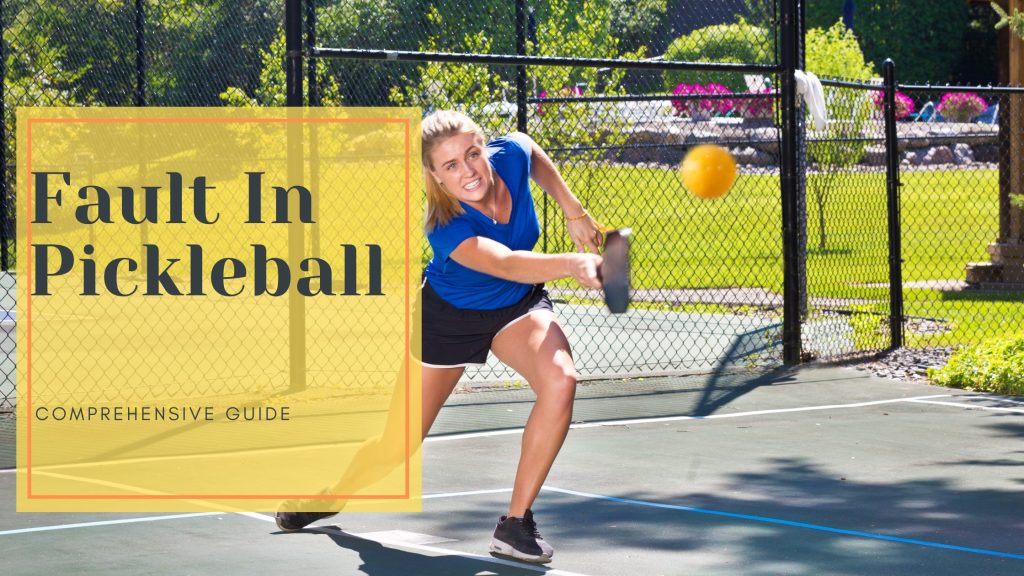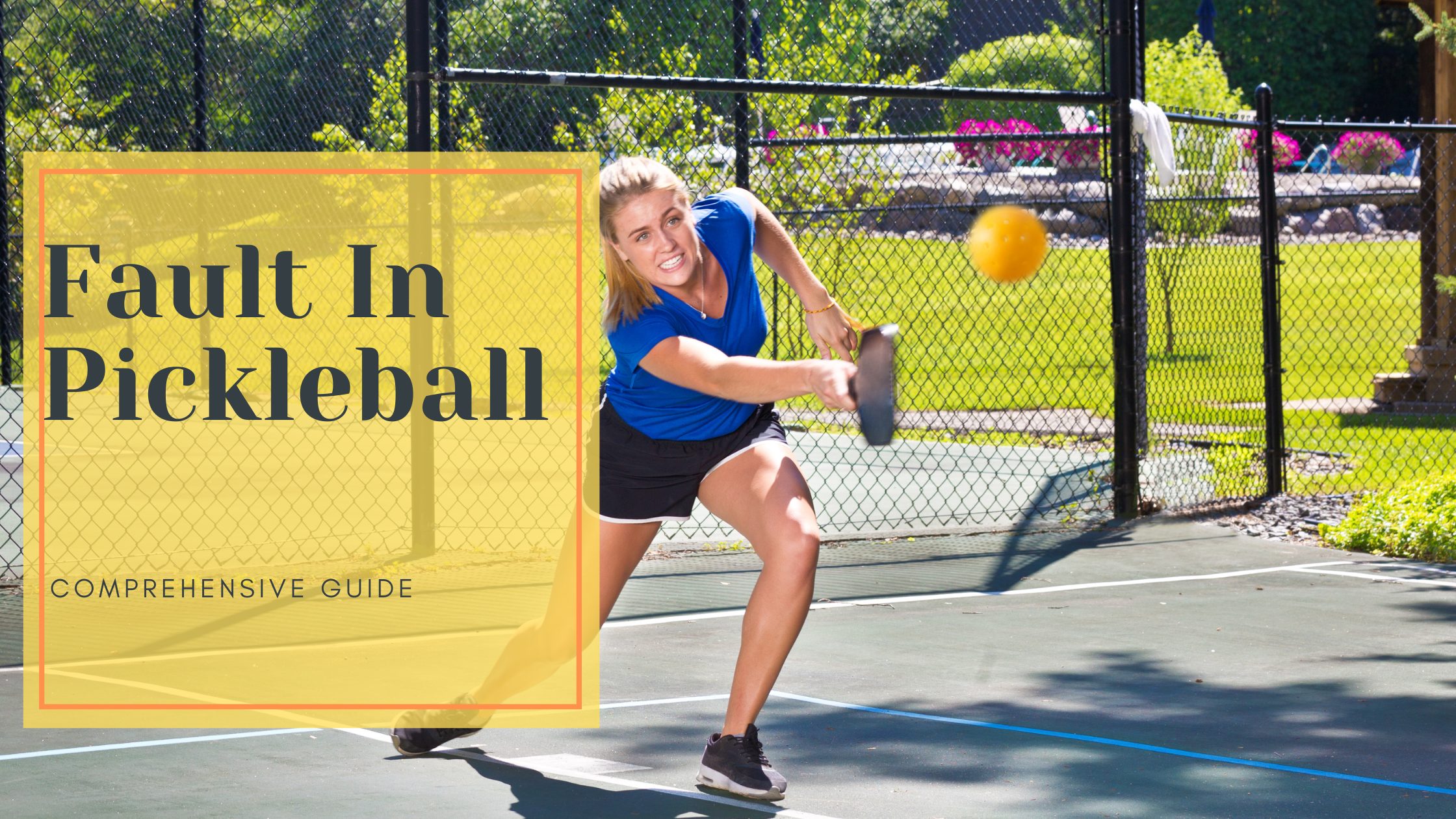
What Is A Fault In Pickleball
Pickleball requires precise movements and excellent hand-eye coordination. However, even the most skilled players are bound to make mistakes during the game, which could result in a fault. A fault is a violation of the rules that results in a loss of a point. Understanding what constitutes a fault in pickleball is crucial for players of all levels. In this article, we will discuss in detail ‘what is a fault in pickleball?’, the different types of faults in pickleball, and how to avoid them.
Service Fault
One of the most common faults in pickleball is the service fault. A service fault occurs when the ball is not served correctly. There are several specific requirements that must be met for a serve to be considered legal. For example, the ball must be served diagonally, with the server standing behind the baseline. The ball must also be hit with an underhanded motion, and it must clear the non-volley zone before it lands. If any of these requirements are not met, a service fault will be called, and the server will lose the point.
Non-Volley Fault
Another common fault in pickleball is the non-volley fault. A non-volley fault occurs when a player hits the ball before it has bounced. This type of fault is also known as a “foot fault” because it usually occurs when a player steps into the non-volley zone before hitting the ball. The non-volley zone is an area surrounding the net where players are not allowed to hit the ball until it has bounced. If a player commits a non-volley fault, the point will be awarded to the opponent.
Double Fault
A double fault occurs when both players on a team commit a fault during the serve. This type of fault results in the loss of the serve, and the opponents will receive the next serve. Double faults are relatively rare in pickleball, but they can be a significant issue if they occur frequently during a game.
Carry or Toss Fault
A carry or toss fault occurs when a player hits the ball with a noticeable pause or scoop before striking the ball. This type of fault is also known as a “volley fault” because it usually occurs when a player hits the ball before it has had a chance to bounce. If a player commits a carry or toss fault, the point will be awarded to the opponent. To avoid this type of fault, players should focus on striking the ball cleanly without a pause or scoop, and wait for the ball to bounce before hitting it if they are in the non-volley zone.
Unsportsmanlike Conduct
In addition to technical faults, there are also faults related to unsportsmanlike conduct in pickleball. This includes behavior such as arguing with the officials, using offensive language and intentionally trying to distract your opponent. Unsportsmanlike conduct can result in a warning, a loss of a point, or even a game or match forfeiture. It’s important for players to maintain good sportsmanship and respect for the rules and their opponents at all times.
Let Serve
A let serve is a serve that is not counted because of an interruption or distraction. For example, if a ball from another court rolls onto the court during a serve, the serve may be ruled a let and replayed. A let serve is not considered a fault, and it does not result in the loss of a point. Instead, the server is given the opportunity to re-serve the ball without penalty.
Touching the Net
Touching the net during a rally in pickleball results in a fault. This includes touching the net with any part of the body, clothing, or equipment. If a player touches the net, the point will be awarded to their opponent. To avoid this type of fault, players should be mindful of their positioning and make sure to not touch the net with any part of their body or equipment.
Is it Possible to Foot Fault in Pickleball?
Yes, foot faults can occur in pickleball in two ways. The first occurs at the service line if a player steps over it while serving. The second occurs at the non-volley zone line if a player steps over it during a volley shot or if their momentum carries them over the line after hitting a volley.
It is crucial to remember to only step over the non-volley zone line, also known as the kitchen, if the ball is going to bounce first. If a player is not allowing the ball to bounce, they must stay behind the line during the volley and even after.
Exploring Foot Faults in Pickleball
There are different types of foot faults in pickleball, including those related to the non-volley zone and those related to the service line. In regards to the non-volley zone, faults can occur if a player or anything they are touching goes over the line during a volley or if they return a volley while standing in the non-volley zone.
In terms of service faults, these can happen if the player misses the ball while serving, the ball touches a permanent object before being served, the ball lands in the non-volley zone, the ball hits the net and lands in the non-volley zone or on the line, the ball lands outside the service area, or the ball hits the court and goes outside the service boundaries. The final type of fault is called a service foot fault and occurs when the server’s feet touch outside the sideline plane, go outside the centerline plane or touch any part of the court during preparation to serve.
FAQs
Final Verdict
In conclusion, understanding what constitutes a fault in pickleball is crucial for players of all levels. Whether it is a service fault, non-volley fault, double fault, let serve, carry or toss fault, or hindrance fault, players should be aware of the rules and requirements for each type of fault. With proper practice, attention to detail, and sportsmanship, players can reduce the number of faults they commit during the game and improve their overall performance.
